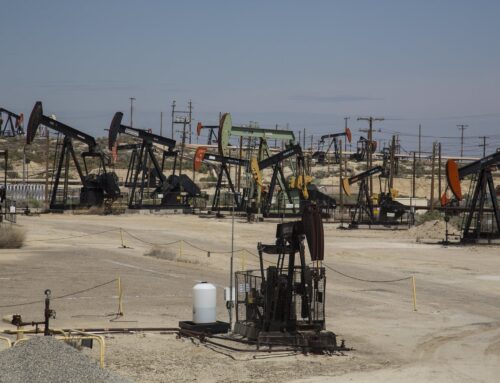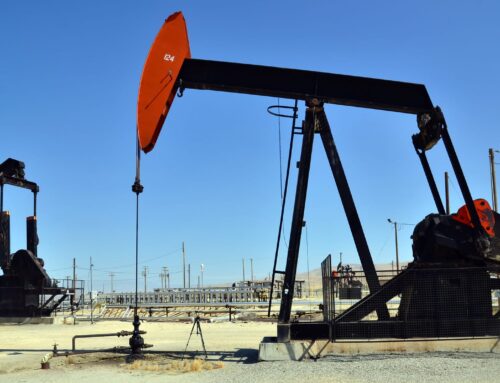View/Download this article in PDF format.
The Department of Energy (DOE) Loan Guarantee Program was created in the Energy Policy Act of 2005 to provide Treasury backed loan guarantees for various energy technologies, including “front end” nuclear fuel cycle projects. While the program also has loan guarantees set aside for nuclear reactor construction, these loans provide an additional subsidy for nuclear fuel generation.
Nuclear reactors are fueled by uranium but mined uranium must be processed to be used as nuclear fuel. Through advanced centrifuge technology or a gaseous diffusion process, mined uranium is “enriched” and made ready to be used as fuel at a nuclear power plant. This enrichment process is referred to as the “front end” of the nuclear fuel cycle because it is the first step in providing fuel to create electricity from nuclear power.
The uranium enrichment portion of the loan guarantee program was first allocated authority in 2008. Congress provided DOE $2 billion specifically for uranium projects and in late June 2008 DOE solicited applications. Two companies—United States Enrichment Corporation (USEC) and French-based firm AREVA – applied for loan guarantees. Since then DOE has reallocated an additional $2 billion in general loan guarantee funds for uranium enrichment, leaving $4 billion available for these uranium enrichment projects, likely to allow both USEC and AREVA to ultimately receive $2 billion loan guarantees through the program. The additional loan guarantee authority for uranium enrichment projects was taken from $4 billion of loan guarantee authority that had not been allocated by Congress to a specific energy technology.
A recent announcement from USEC stating its need for a decision from DOE by the end of October, coupled with the recent bankruptcy of Solyndra, a solar manufacturing company that received the first loan guarantee, has brought increased attention to the DOE loan guarantee program. Solyndra went bankrupt after getting a $535 million loan guarantee. The two uranium enrichment companies most likely to receive a loan guarantee from the DOE could put $4 billion on the line, almost eight times what taxpayers risked on Solyndra. The early financial red flags for DOE regarding these uranium projects, coupled with the generally troubled uranium market, should give taxpayers great concern.
Political Pressure
USEC has put significant pressure on DOE to give them a loan, regardless of their company’s financial and technological situation. When President Obama was a presidential candidate, he wrote a letter supporting USEC’s application for a loan guarantee. Though an independent engineering review said the technology was “not commercially viable today,” USEC’s CEO accused the Administration of going back on the President’s earlier promise when DOE asked the company to withdraw and resubmit their application at a later date: “We are disappointed that [the] campaign commitment [to give USEC a loan guarantee] has not been met.”
Today, USEC may be in serious financial trouble, but the loan guarantee program cannot fix its economic woes. Without private investment, the project is destined to failure whether taxpayers cosign the loan or not. If the project is not financially justified, it should not get a loan guarantee. Asking taxpayers to take on excessive risk to save a company is not the responsibility of the DOE loan guarantee program.
One private company was able to build a fully functioning uranium enrichment plant without a loan guarantee, raising serious questions as to why other uranium enrichment companies require backing from federal taxpayers. Louisiana Energy Services received a license to operate a uranium enrichment facility in New Mexico back in 2006. The plant, known as URENCO USA, began production on June 11, 2010, and continues to expand its operating capacity today.
AREVA put eight large investment projects on hold in December 2011, including the project at Eagle Rock in Idaho. It aims to be back to back to profitability by 2016. AREVA CEO Luc Oursel did not exclude the possibility that they could partner with USEC on a single uranium enrichment plant. Also, Congress did not include $150 million in research and development funds for USEC in a budget bill for fiscal year 2012 passed in December, the first half of $300 million that the DOE offered USEC in October. Sens. Portman (R-OH) and Brown (D-OH) will introduce legislation for the funding, which would come from “$106 million in existing Department of Energy funds as well as $44 million in assets at Piketon in the form of “tails,” a byproduct of uranium enrichment.”
First Loan Guarantee Award for Uranium Enrichment
In May 2010, AREVA was selected to receive the first uranium enrichment loan guarantee. The $2 billion loan guarantee is for the Eagle Rock Facility near Idaho Falls, Idaho. The guarantee has not been finalized but offered on a conditional basis, pending receipt of the project’s license, and other publically undisclosed criteria determined by DOE. AREVA received their license from the Nuclear Regulatory Commission on October 12th of this year.
The other uranium enrichment applicant, USEC, originally appeared to be the front runner for the first uranium enrichment loan guarantee. However, the USEC loan guarantee is still under review after almost being abandoned because of financial reasons. Although USEC had already secured its license in 2007 , which put it in line ahead of the AREVA facility, the project’s ranking shifted when in July 2009 DOE requested USEC withdraw its application on the grounds that “the project runs a risk of either major cost overruns or reliability problems or both.” The political fallout that followed DOE’s decision on USEC meant that USEC never formally withdrew their application, but did submit a “comprehensive update” to it for consideration in August 2010.
Background on AREVA Eagle Rock Enrichment Facility, Idaho
On December 30, 2008 AREVA submitted a construction and application license to the Nuclear Regulatory Commission (NRC) to build a uranium facility in Eagle Rock, Idaho with the intent of starting construction in 2011. , During a presentation before the Idaho House Environment, Energy and Technology Committee in February 2009, an AREVA representative told members that the company was on track despite its 21% drop in net profit due to cost overruns and delays at its Okiluto-3 reactor plant in Finland.
AREVA’s Eagle Rock Enrichment Facility in Idaho is estimated to cost $3.2 billion. In a March 2009 update, AREVA said the company was ahead of schedule in preparation for review and construction. In that same month, AREVA informed the NRC that it would revise its current application and double the plant’s uranium production capacity.
By June 2009, AREVA was pressing the NRC to allow the company an exemption from Commencement of Construction Requirements for AREVA’s Eagle Rock Enrichment Facility to prepare for early site preparation work. Less than a year later, the NRC approved the exemption. The NRC gave AREVA a license in October 2011.
On February 5, 2010, a month before exemption approval, AREVA expressed progress in obtaining a $2 billion DOE loan guarantee, calling it a “unique nuclear project which cannot be financed on the open market without federal loan insurance.” Impatient lawmakers chided DOE Secretary Chu for being too slow to finalize AREVA’s application. Chu responded that the review takes time due to the project’s complicated nature and large overall cost.
On May 20, 2010, AREVA was awarded a conditional loan of $2 billion by the DOE for its Eagle Rock Facility. AREVA announced on December 13, 2011 that they were suspending the Eagle Rock Facility.
Pending Loan Guarantee: Background on the USEC Uranium Enrichment Facility
The United States Enrichment Corporation (USEC) is currently building a centrifuge plant in Piketon, Ohio for an estimated cost that has increased from $1.7 billion in 2007 to $5 billion this year. So far the company has invested $1.95 billion in the project and expects to need another $2.8 billion to fully fund the project. They are actively seeking an additional approximately $3 billion in financing.
In August of 2004, USEC submitted an application to the NRC for a license to construct and operate the Piketon plant and received the license in 2007. While project proponents argued that the plant was ready to receive a loan guarantee in 2009, having received its NRC license and moved through the early stages of the application process, DOE had other concerns. In July 2009, DOE requested USEC to withdraw its loan application for the Piketon plant on grounds that “the project runs the risk of either major cost overruns or reliability problems or both.”
When DOE asked USEC to resubmit their application in 12-18 months, they offered the company $45 million for ongoing research and development activities. Trying hard to refocus the political limelight, DOE endeavored to obfuscate the issue by titling the request to withdraw the application press release as “800 to 1000 New Jobs Coming to Piketon,” in reference to an investment of $150-200 million over four years to clean up cold-war era contamination in the area. USEC initially rejected the funding , but ultimately accepted it less than a year later.
USEC’s financial status remains a significant problem that has plagued the Maryland-based company since the start of the Piketon plant’s construction in 2007. On December 18, 2009, Moody’s Investor Service downgraded its ratings for USEC to junk grade status citing “expectations of weak credit metrics over the next several years, increased competition and liquidity risks.” The findings clearly show USEC’s poor financial strength and positioning, especially in light of being asked to resubmit their application. While cost projects for the plant have nearly tripled, previous estimates to have the plant operating by 2010 have now been pushed back to 2011, with these delays causing costs to increase.
USEC recently threatened the DOE, saying they would lay off employees if they did not receive a conditional commitment on a loan guarantee by November 1st. This demand comes as the company’s share price has plunged over the last year by nearly 500%, trading the week of October 3 at an all time low since the company went public in 1998, and after the company saw a dramatic slump in net income in 2010. , Sens. Portman (R-OH) and Brown (D-OH) have both made statements supporting the application , as has Speaker of the House John Boehner (R-OH).
USEC has said it is working to leverage another $1 billion of capital through Japanese export credit agencies. USEC has also said that receiving the loan guarantee is largely conditional upon receiving the $1 billion in financing: “These potential financings are closely intertwined and will need to close simultaneously.” The company has said it would work closely with DOE over the month of October on the loan guarantee.
The Department of Energy made no announcement about a loan guarantee for USEC, but did agree to contribute $300 million for research, development, and demonstration at USEC if Congress appropriated the funding. Congress has so far made no appropriations for research at USEC.
For more information, please contact Autumn Hanna (202) 546-8500 x112 or Autumn [at] taxpayer.net.










